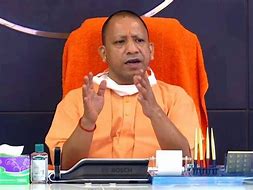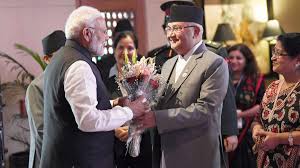Feature
India wants to grow and prosper with neighbours: Prabhu

New Delhi: The South Asian region could cooperate in the fields of agriculture, water conservation and climate change besides trade and tourism to make the region more prosperous and inter-connected, Railway Minister Suresh Prabhu said here on Thursday.
Prabhu, speaking at the launch of the RIS South Asia Development and Cooperation Report 2015, said the South Asian Association for Regional Cooperation (SAARC) region despite being home to nearly one-fourth of the world’s population lacks the clout it should rightfully have because of poor development.
Remarking on the connectivity projects being launched by SAARC countries, Prabhu said India’s policy towards neighbours is that it wants to be “extremely friendly towards neighbours and wants them to be equally friendly towards it”.
“We want to grow together and prosper together, and we are willing to pay a price to make that happen” by way of building infrastructure projects for the use of neighbours.
He said that while the ASEAN region, which shares some of the rivers, has prospered, the South Asian region has not done so due to infighting.
“It is time to cooperate by leaving the challenges out and see the possibilities of benefits. Then, automatically they will realise that the challenges no longer exist,” Prabhu said.
He said with South Asia being predominantly agriculture driven, the countries should focus on cooperation in this sector, especially on new seeds, less water consuming crops and heat resistant crops.
Besides, the countries could cooperate in water conservation and use, the overarching issue of climate change, flood control, in energy and tourism.
Prabhu also said that the region can focus on enhancing trade, which would in turn boost the GDP growth and improve the human development index of the region, which is poor.
“The development should be people centric. As regards India, we have a responsibility and we always feel we must take care of our neighbours in a way that we will take care of our brothers and sisters. We consider this as a bounden responsibility given to us by history but also an obligation we have taken upon ourselves which we feel we should do to promote goodwill in the countries and the region,” he said.
RIS (Research and Information System for Developing Countries) chairperson Shyam Saran said there are asymmetries in the South Asian region among countries and the report has sought to see how to turn these into drivers for growth.
He said there is a feeling that “if India can give a stake in its own prosperity to its neighbours, not because of generosity, but because it is important to India, perhaps this would begin the process of overcoming some of the divisions that we see in South Asia”.
The former foreign secretary said that “India has been prepared to make a big political and economic investment in trying to get the regional integration story moving at a faster pace”.
“There is no doubt that India will have to play the leading role (in SAARC); there is no other country that can play it,” Saran said, adding that in order to boost transit among South Asian neighbours, India will itself have to become a major transit country and allow goods to flow from one country to another.
Referring to the sub-regional connectivity projects, he said that while Bangladesh has benefited by linking up with the energy grid in India which has helped to ameliorate the power situation in that country, in the case of Pakistan a similar electricity sharing project was shot down in Islamabad due to “political differences”.
A.M. Gondane, joint secretary (SAARC) in the external affairs ministry, said that though the South Asian Free Trade Area (SAFTA) was inked in 2005 for trade in goods, it is far from being fully implemented.
He said trade was one of the major pillars for boosting integration in the region. It comprises 23 percent of the world’s population but its share in the global GDP is around 3 percent.
RIS director general Sachin Chaturvedi said the report, which has focused on the theme ‘Economic Integration for Peace-Creating Prosperity’, was in line with the theme of the 18th SAARC Summit in Kathmandu last year.
He said the report focuses on achieving prosperity in the region through economic integration, which in turn would be ‘peace creating’.
Entertainment
Meghalaya Reserves Legalized Gambling and Sports Betting for Tourists

The State Scores Extra High on Gaming-Friendly Industry Index
Meghalaya scored 92.85 out of 100 possible points in a Gaming Industry Index and proved to be India’s most gaming-friendly state following its recent profound legislation changes over the field allowing land-based and online gaming, including games of chance, under a licensing regime.
The index by the UK India Business Council (UKIBC) uses a scale of 0 to 100 to measure the level of legalisation on gambling and betting achieved by a state based on the scores over a set of seven different games – lottery, horse racing, betting on sports, poker, rummy, casino and fantasy sports
Starting from February last year, Meghalaya became the third state in India’s northeast to legalise gambling and betting after Sikkim and Nagaland. After consultations with the UKIBC, the state proceeded with the adoption of the Meghalaya Regulation of Gaming Act, 2021 and the nullification of the Meghalaya Prevention of Gambling Act, 1970. Subsequently in December, the Meghalaya Regulation of Gaming Rules, 2021 were notified and came into force.
All for the Tourists
The move to legalise and license various forms of offline and online betting and gambling in Meghalaya is aimed at boosting tourism and creating jobs, and altogether raising taxation revenues for the northeastern state. At the same time, the opportunities to bet and gamble legally will be reserved only for tourists and visitors.
“We came out with a Gaming Act and subsequently framed the Regulation of Gaming Rules, 2021. The government will accordingly issue licenses to operate games of skill and chance, both online and offline,” said James P. K. Sangma, Meghalaya State Law and Taxation Minister speaking in the capital city of Shillong. “But the legalized gambling and gaming will only be for tourists and not residents of Meghalaya,” he continued.
To be allowed to play, tourists and people visiting the state for work or business purposes will have to prove their non-resident status by presenting appropriate documents, in a process similar to a bank KYC (Know Your Customer) procedure.
Meghalaya Reaches Out to a Vast Market
With 140 millions of people in India estimated to bet regularly on sports, and a total of 370 million desi bettors around prominent sporting events, as per data from one of the latest reports by Esse N Videri, Meghalaya is set to reach out and take a piece of a vast market.
Estimates on the financial value of India’s sports betting market, combined across all types of offline channels and online sports and cricket predictions and betting platforms, speak about amounts between $130 and $150 billion (roughly between ₹9.7 and ₹11.5 lakh crore).
Andhra Pradesh, Telangana and Delhi are shown to deliver the highest number of bettors and Meghalaya can count on substantial tourists flow from their betting circles. The sports betting communities of Karnataka, Maharashtra, Uttar Pradesh and Haryana are also not to be underestimated.
Among the sports, cricket is most popular, registering 68 percent of the total bet count analyzed by Esse N Videri. Football takes second position with 11 percent of the bets, followed by betting on FIFA at 7 percent and on eCricket at 5 percent. The last position in the Top 5 of popular sports for betting in India is taken by tennis with 3 percent of the bet count.
Local Citizens will Still have Their Teer Betting
Meghalaya residents will still be permitted to participate in teer betting over arrow-shooting results. Teer is a traditional method of gambling, somewhat similar to a lottery draw, and held under the rules of the Meghalaya Regulation of the Game of Arrow Shooting and the Sale of Teer Tickets Act, 2018.
Teer includes bettors wagering on the number of arrows that reach the target which is placed about 50 meters away from a team of 20 archers positioned in a semicircle.
The archers shoot volleys of arrows at the target for ten minutes, and players place their bets choosing a number between 0 and 99 trying to guess the last two digits of the number of arrows that successfully pierce the target.
If, for example, the number of hits is 256, anyone who has bet on 56 wins an amount eight times bigger than their wager.





















